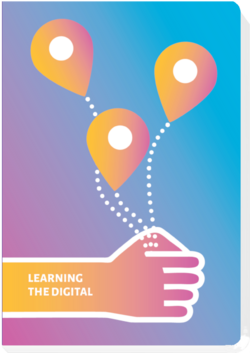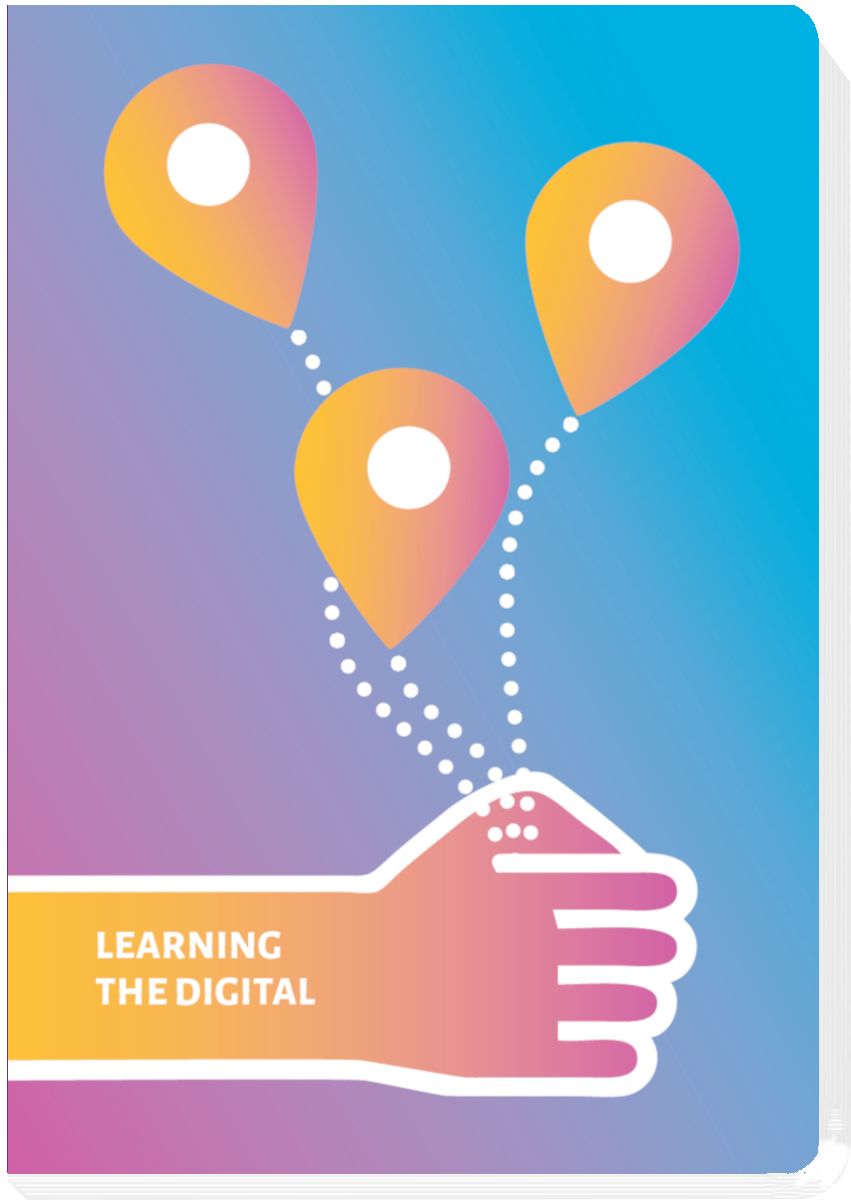Promoting reflection on the different sources of disinformation, tools of communications and their contents lead to better assessment of the opportunities and the risks (control and oppression) related to such an overabundant landscape and empower learners to make better choices in their communication habits.
While mobile phones’ share of total internet time is increasing, most people around the world still use a variety of different devices to go online. Half of the time spent on mobile phones is used for social and communication applications (We are social, 2020). According to the Reuters Digital News report (2020), WhatsApp saw the biggest growth in 2020. Notably, a quarter of their sample used WhatsApp to find, discuss, or share news about COVID-19 in April 2020. During the pandemic, the WhatsApp released a guide on how to use the service in a responsible way. On the same page, a list of good practices shows that WhatsApp groups have been used to deliver remote digital learning in many cases, even in a refugee camp in Syria (Ashawi, 2020). Recent academic studies confirm that WhatsApp has been globally adopted as a learning medium during the pandemic, but instant messaging applications were tested in educational settings before as well. Other messenger apps with similar functions (Telegram, privacy-friendly Signal, Threema, etc.) have the same potential.
Contents
Case study: Instant messaging in education
Many studies reflect on the use of technology in education, drawing on the concept that “learning is a social act dependent upon interaction among people and their tools and technologies” (Doering et al., 2008). Jacobs (2006) argues that Instant Messaging (IM), in particular, should be viewed as a writing technology that builds skills needed at school and at work, such as “collecting, assembling, and distributing information”. Therefore, instant messaging technologies could be treated more consciously as digital tools in educational settings.
Pros and Cons of WhattsApp
(built on Cetinkaya, 2017)
|
Pros |
Cons |
|---|---|
|
Potential to provide cooperation |
Concerns towards privacy and security |
|
Increase social interaction and sense of belonging (Doering et al., 2008; Sweeny, 2010) |
Unnecessary messages (Cetinkaya, 2017) |
|
Interest and motivation (Plana et al., 2013) |
Distraction |
|
Support learning anytime and anywhere |
Exceeding the limits of personal relations |
|
Provide peer support, feedback, and allow for sharing of information in education (Cifuentes & Lents, 2010; Smit, 2012) |
Use of slang language |
|
Potential to increase “unconscious” learning (Smit, 2012; Cetinkaya, 2017) |
Educators’ sense of overload |
|
Eliminate social barriers (Doering et al., 2008) |
Negative effects arising from excessive use |
|
Digital divide |
Source: The Impact of Whatsapp Use on Success in Education Process
A common mistake is to consider IM as a synchronous tool when it isn’t: users do not share the same time and space, although a persuasive interface is likely to call the user to immediate action. IM and emails are then asynchronous tools, of little use for organizational/operational purposes, but useful for carrying on a debate as they are archivable and searchable, thus more open to critical evaluations across time (Trocchi, 2020). In fact, studies have found that usually IM does not work when used as a discussion group, although it works properly when used as an informative tool, providing explanatory texts with images (Cetinkaya, 2017). It’s not clear whether IM improved student-teacher interaction, as being on a peer level is sometimes uncomfortable for teachers/educators. When teaching with technology, educators should indeed adopt a stance as co-learners (Doering, Lewis, Veletsianos, Nichols-Besel, 2008) accepting IM conventions as informal exchanges, using emoticons and acronyms, etc.
Most applications have a form of “lock-in” in place preventing users from quitting them even if they are unhappy with their (usually unread) terms of service. However, interoperability is still the norm in electronic communication like email and telephone; in fact, people can call one mobile operator from another or send emails from one provider to another.
References
- Ashawi, K. (2020). In Syria camp fearing coronavirus, young teachers adapt again. Reuters, April 1, 2020. https://www.reuters.com/article/us-health-coronavirus-syria-learning/in-syria-camp-fearing-coronavirus-young-teachers-adapt-again-idUSKBN21J5GM
- Cetinkaya, L. (2017). The Impact of Whatsapp Use on Success in Education Process. The International Review of Research in Open and Distributed Learning, 18(7). https://doi.org/10.19173/irrodl.v18i7.3279
- Cifuentes, O. E., & Lents, N. H. (2011). Increasing student-teacher interactions at an urban commuter campus through instant messaging and online office hours. Electronic Journal of Science Education, 14(1), 1-13. Retrieved from http://ejse.southwestern.edu/article/view/7314
- Dobelli Rolf, 2020, Stop reading the news: A Manifesto for a Happier, Calmer and Wiser Life, Sceptre Ed., London.
- Doering, A.; Lewis, C.; Veletsianos, G.; Nichols-Besel, K.. (2008). Preservice Teachers’ Perceptions of Instant Messaging in Two Educational Contexts. Journal of Computing in Teacher Education. 25. 45-52. https://files.eric.ed.gov/fulltext/EJ834086.pdf
- Jacobs, G. E. (2006). Fast Times and Digital Literacy: Participation Roles and Portfolio Construction Within Instant Messaging. Journal of Literacy Research, 38(2), 171–196. https://doi.org/10.1207/s15548430jlr3802_3
- Sharma, S (2017). A reporter in a rural district of India uses WhatsApp to broadcast local news — and makes money doing it. Shivendra Gaur’s Rocket Post Live has already gained 8,000 paying subscribers for rolling news alerts and a daily video bulletin. https://www.niemanlab.org/2017/03/a-reporter-in-a-rural-district-of-india-uses-whatsapp-to-broadcast-local-news-and-makes-money-doing-it/ March 30, 2017,
- Plana, M.; Gimeno, A.; Appel, C.; Hopkins, Joseph. (2013). Improving learners’ reading skills through instant short messages: a sample study using WhatsApp.
- Smit, I.; Goede, R. (2012). WhatsApp with BlackBerry; Can messengers (BBM) be MXit? In Proceedings of the 14th annual conference on world wide web applications. Cape Town, South Africa: Cape Peninsula University of Technology. Retrieved from http://hdl.handle.net/10394/13628
- Sweeny, S.M. (2010), Writing for the Instant Messaging and Text Messaging Generation: Using New Literacies to Support Writing Instruction. Journal of Adolescent & Adult Literacy, 54: 121-130. https://doi.org/10.1598/JAAL.54.2.4
- Trocchi, A. (2019), Internet Mon Amour, Ledizioni, Milano. Available online at https://circex.org/it/ima
- WhatsApp: How WhatsApp can help you stay connected during the coronavirus (COVID-19) pandemic. Retrieved at 2021/10/06 from: https://www.whatsapp.com/coronavirus
Valentina Vivona
Researcher at the Osservatorio Balcani Caucaso Transeuropa (OBCT), a think tank focused on South-East Europe, Turkey and the Caucasus located in Trento (Italy).
handbook for Facilitators: Learning the Digital
This text was published in: M. Oberosler (ed.), E. Rapetti (ed.), N. Zimmermann (ed.), G. Pirker, I. Carvalho, G. Briz, V. Vivona (2021/22). Learning the Digital. Competendo Handbook for Facilitators.
Created in the frame of the project DIGIT-AL - Digital Transformation Adult Learning for Active Citizenship.








